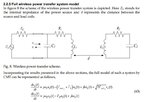nvt088
Member level 4
Hello, many papers used coupled mode theory for wireless power transfer design.
It looks interesting because we can know the energy exchange in the system.
But mostly, they don't explain in details about this theory. Is there any body know well about this theory? Can you give me some good documents.
Thank you.
It looks interesting because we can know the energy exchange in the system.
But mostly, they don't explain in details about this theory. Is there any body know well about this theory? Can you give me some good documents.
Thank you.
